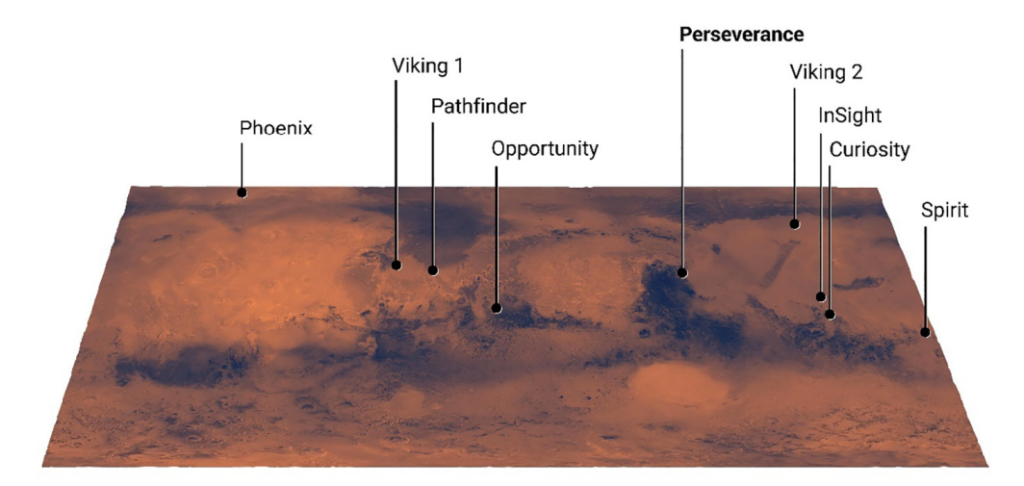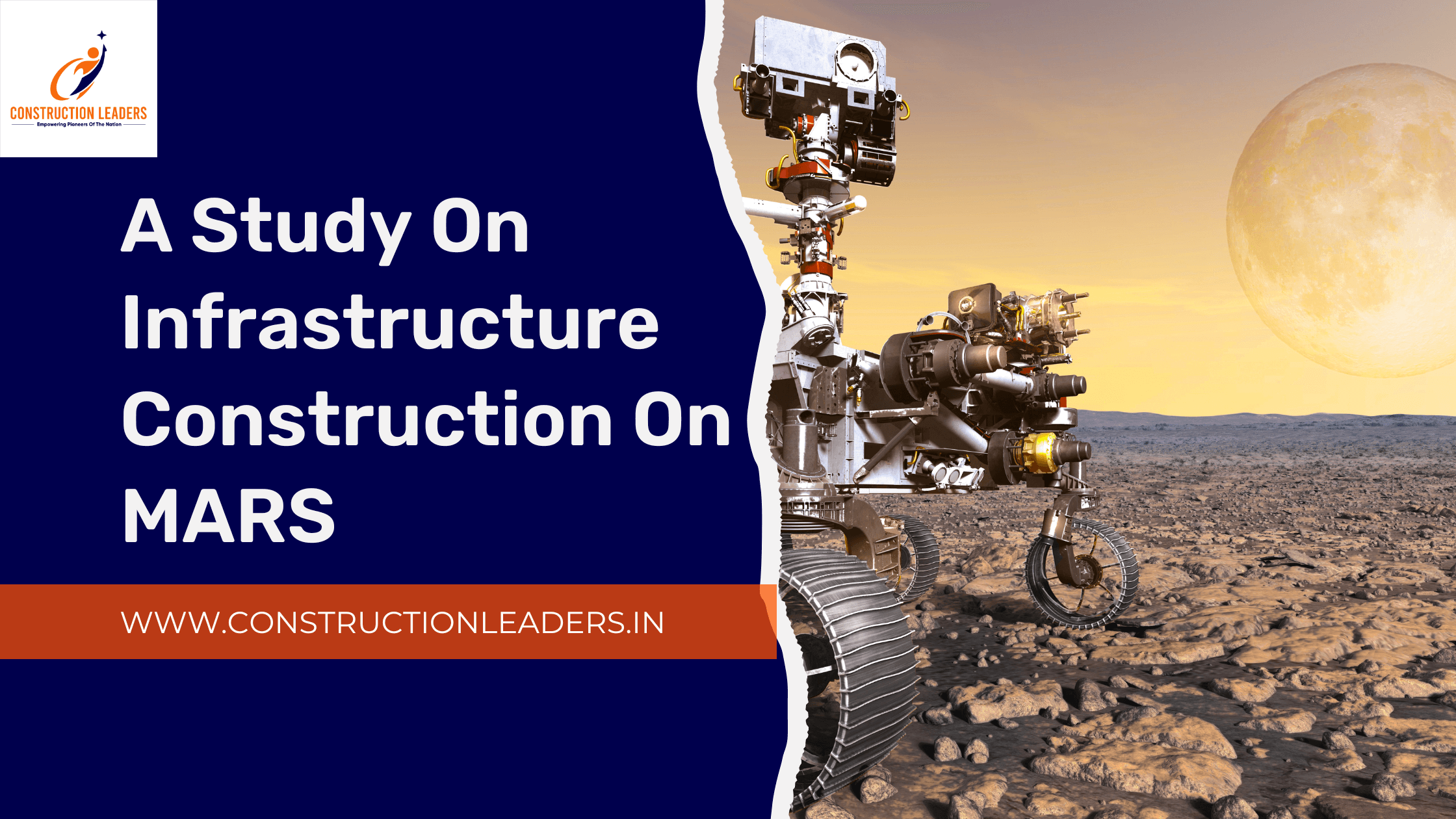A Study On Infrastructure Construction On MARS
Human Exploration OnMARS
Mars exploration refers to an examination/ study/ investigation of topology, climatic, weather, soil, water, air etc in Mars. Weather reflects short-term conditions of the atmosphere while climate is the average daily weather for an extended period of time at a certain location. The exploration can be done by onsite and offsite techniques. Onsite refers to a human/ robot (rover) exploration on Mars land and can get soil samples, water quality and climatic and weather conditions. Offsite exploration refers to exploration of Mars without landing which means by satellites, probes etc. in orbits, space by this we can get topology,
In the 21th century, with the progress and innovation of space science and technology, Mars exploration has received more attention. Many countries have made or are planning their programs towards Mars, among which are the U.S., Russia, European Space Agency (ESA), China, Japan and India. In 2004, the US President George W. Bush. proposed human exploration to Mars as the ultimate goal of future space exploration. In the U.S., currently there are multiple active plans and programs to put humans on Mars within the next ten to thirty years. The exploration on Mars started by Soviet in 1960’s. They launched a probe. Though it is failed, they marked as the beginning of human exploration.
Till June. 2022, eight spacecrafts are operational out of eighteen spacecrafts launched in orbit. Out of six successfully launched rovers or landers in red planet surface, three are still operational. Out of six launched rovers, five are from NASA (National Aeronautics Space Administration, USA) and the other is from CNSA (China National Space Administration, China). Therefore, eight spacecrafts in orbit and three space crafts on surface are operational till date. In 1971, the Mariner 9, part of the NASA Mariner Program, successfully entered orbit around Mars for the first time, took high-resolution photographs of satellites of Mars for the first time, and worked in Mars orbit for nearly a year. At the end of the 20th century, the U.S. ‘‘Mars Pathfinder” was one of the most successful Mars exploration missions in history, this mission carried in-depth analysis on the Martian atmosphere, climate, and geology and the composition of its rocks and soil.
The list of spacecraft mentioned in below Table1.
Table 1: List of spacecraft on Mars

(Source: Jiawen Liu,2021)The Mars Orbiter Mission (MOM), also called Mangalyaan (“Mars-craft”, from Mangala, “Mars” and yāna, “craft, vehicle”), is a space probe orbiting Mars since 24 September 2014. It was launched on 5 November 2013 by the Indian Space Research Organisation (ISRO). It is India’s first interplanetary mission and it made it the fourth space agency to achieve Mars orbit,after Roscosmos, NASA, and the European Space Agency. It made India the first Asian nation to reach Martian orbit and the first nation in the world to do so on its maiden attempt.
The Mars Orbiter Mission probe lifted-off from the First Launch Pad at Satish Dhawan Space Centre (Sriharikota Range SHAR), Andhra Pradesh, using a Polar Satellite Launch Vehicle (PSLV) rocket C25 on 5 November 2013. The launch window was approximately 20 days long and started on 28 October 2013. The MOM probe spent about a month in Earth orbit, where it made a series of seven apogee-raising orbital manoeuvres before trans-Mars injection on 30 November 2013 (UTC). After a 298-day transit to Mars, it was put into Mars orbit on 24 September 2014.

In the early 2000s, the U.S. and ESA carried out their missions to Mars respectively. April 7, 2001, the U.S. launched the Odyssey, which is still in orbit, using spectrometers and a thermal imager to detect evidence of potential water and ice, as well as studying the geology and radiation on Mars. In 2002, Odyssey firstly discovered that there may be abundant ice in the near-surface layers of Mars. In 2004, ESA also announced that its ‘‘Mars Express” probe had discovered the presence of frozen water in the south pole of Mars. Till Sept 2020, a discovery is reported based on MARSIS radar studies, of a three more subglacial lakes on Mars. In 2004, the US President George W. Bush. proposed human exploration to Mars as the ultimate goal of future space exploration.
In the U.S, currently there are multiple active plans and programs to put humans on Mars within the next ten to thirty years: In 2002, Elon Musk established the SpaceX, aiming at reducing the cost of space transportation and developing a rapid reusable launch system. On 30 May 2020, SpaceX successfully launched two NASA astronauts into orbit on a Crew Dragon spacecraft, making it the first private company to send astronauts to the International Space Station (ISS). In 2015, NASA issued its official plan for human exploration and colonization of Mars, which was named as ‘‘Journey to Mars”. The plan operates through three distinct phases including Earth Reliant, Proving Ground and Earth Independent. In 2016, China launched its first Mars exploration mission, and successfully delivered the Tianwen-1 directly into the Earth Mars transfer orbit in 2020. The Tianwen-1 entered Martian orbit successfully in February 2021 and will study the magnetosphere and ionosphere of Mars along with other climate characteristics (Zou et al., 2021). Till February 20th 2021, Mars is host to eleven functioning spacecraft: eight in orbit and three on the surface, as shown in Table 1, and the landing sites of various Mars rovers are presented below.

About the Author
Hi, this is Konchada Vivek currently pursuing my master’s in Structural Engineering, NIT SILCHAR. I define myself as committed, adaptable, inquisitive, honest, and flexible. I’m actively looking for an opportunity in an esteemed organization in technical or managerial roles.


